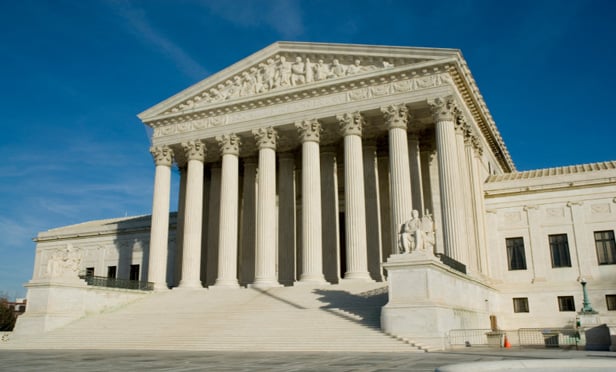Features

Methods for Trademark Valuations
Valuations of trademarks, such as those in the entertainment industry, are most commonly performed in relation to a sale or licensing transaction or for lending and collateral purposes.
Features

What's Your Trademark Worth? Determining the Value of Trademarks For Collateral, Sale or Licensing
This article explores the options available to a client to value its trademarks during a financial crisis, to ensure one of the most valuable assets it owns can continue to work for the company and see it through the lean times.
Features

Damages In Trademark Infringement Litigations
During a time when online marketing, virtual shopping and electronic communication are more widely used than ever, it is critically important for entertainment industry businesses to be highly aware of how they are using trademarks, the scope of a trademark owner's rights and the consequences of infringing them.
Features

The Russian Vodka Saga
Federal Treasury Enterprise Sojuzplodoimport v. Spirits International BV What do the fall of the Soviet Union, a heist of trademark rights, and Stolichnaya vodka have in common? They are all key components of the Russian Federation's efforts to reclaim its trademarks in Stolichnaya vodka.
Features

What's in a Name? Booking.com and Consumer Perception Evidence
In the first case in U.S. Supreme Court history argued by telephone, the Court ruled 8-1 in favor of Booking.com, holding that it could register as a trademark its eponymous domain name BOOKING.COM.
Features

What's In a Name? Booking.com and Consumer Perception Evidence
In the first case in U.S. Supreme Court history argued by telephone, the Court on June 30, 2020 ruled 8-1 in favor of Booking.com holding that it could register as a trademark its eponymous domain name BOOKING.COM.
Features

Defense Counsel Discuss Outcome in Dance Steps Case
Kirkland & Ellis has notched a win in cutting-edge litigation that questions the protectability of dance steps, what constitutes choreography and the relationship between copyright, and right of publicity and trademark law.
Features

Eliminating Willfulness as a Prerequisite to Recovering an Infringer's Damages in Dilution Cases
Romag Fasteners, Inc. v. Fossil, Inc. The Supreme Court, settling a circuit split, held that, although highly important, willfulness is not a prerequisite for a trademark infringement plaintiff to obtain a profits award.
Features

U.S. Supreme Court Rejects 'Defense Preclusion' in Trademark Suit
On May 14, 2020, the U.S. Supreme Court resolved a circuit split, finding that any preclusion of litigation defenses must comply with traditional res judicata principles, and ruling that Lucky Brand was not precluded from asserting its defenses in its long-standing trademark litigation against Marcel Fashions Group
Features

TRO Bid in Arts Case Results in COVID-19 Rebuke from Judge
At this moment in COVID-19 time, if your case involved stopping the sale of counterfeit unicorn products on the Internet, sorry, that wouldn't be an emergency. That was the message from U.S. District Judge Steven C. Seeger, in a decision denying a request for a temporary restraining order filed on behalf of Art Ask Agency, the exclusive licensee for the fantasy art of British artist Anne Stokes, who is popular among the Dungeons and Dragons crowd.
Need Help?
- Prefer an IP authenticated environment? Request a transition or call 800-756-8993.
- Need other assistance? email Customer Service or call 1-877-256-2472.
MOST POPULAR STORIES
- The 'Sophisticated Insured' DefenseA majority of courts consider the <i>contra proferentem</i> doctrine to be a pillar of insurance law. The doctrine requires ambiguous terms in an insurance policy to be construed against the insurer and in favor of coverage for the insured. A prominent rationale behind the doctrine is that insurance policies are usually standard-form contracts drafted entirely by insurers.Read More ›
- A Lawyer's System for Active ReadingActive reading comprises many daily tasks lawyers engage in, including highlighting, annotating, note taking, comparing and searching texts. It demands more than flipping or turning pages.Read More ›
- The Brave New World of Cybersecurity Due Diligence in Mergers and Acquisitions: Pitfalls and OpportunitiesLike poorly-behaved school children, new technologies and intellectual property (IP) are increasingly disrupting the M&A establishment. Cybersecurity has become the latest disruptive newcomer to the M&A party.Read More ›
- Abandoned and Unused Cables: A Hidden Liability Under the 2002 National Electric CodeIn an effort to minimize the release of toxic gasses from cables in the event of fire, the 2002 version of the National Electric Code ("NEC"), promulgated by the National Fire Protection Association, sets forth new guidelines requiring that abandoned cables must be removed from buildings unless they are located in metal raceways or tagged "For Future Use." While the NEC is not, in itself, binding law, most jurisdictions in the United States adopt the NEC by reference in their state or local building and fire codes. Thus, noncompliance with the recent NEC guidelines will likely mean that a building is in violation of a building or fire code. If so, the building owner may also be in breach of agreements with tenants and lenders and may be jeopardizing its fire insurance coverage. Even in jurisdictions where the 2002 NEC has not been adopted, it may be argued that the guidelines represent the standard of reasonable care and could result in tort liability for the landlord if toxic gasses from abandoned cables are emitted in a fire. With these potential liabilities in mind, this article discusses: 1) how to address the abandoned wires and cables currently located within the risers, ceilings and other areas of properties, and 2) additional considerations in the placement and removal of telecommunications cables going forward.Read More ›
- Guidance on Distributions As 'Disbursements' and U.S. Trustee FeesIn a recent case from the Bankruptcy Court for the District of Delaware, In re Paragon Offshore PLC, the bankruptcy court provided guidance on whether a post-plan effective date litigation trust's distributions constituted disbursements subject to the U.S. Trustee fee "tax."Read More ›
